Your indoor plants don’t grow well once you transplant them? Do These Things Before Planting Any Houseplant to ensure they stay healthy afterwards.
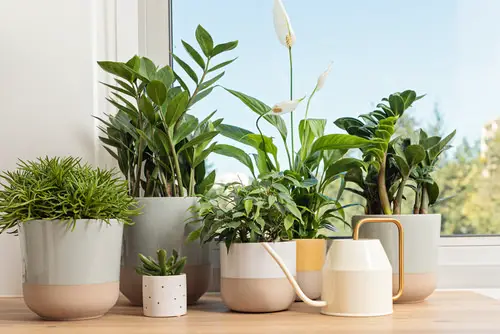
How you transplant your plants while potting them sets the stepping stone for their health for the years to come. Do These Things Before Planting Any Houseplants to ensure they stay happy.
Here are the best tips to keep your houseplants clean
Do These Things Before Planting Any Houseplants
1. Scratch Rootballs

While you are repotting the plant, check out the roots. If the roots are densely packed, it would be good to scratch them up a bit to make them loose. Also, snip away the dark brown and rotten parts, too, if you identify.
Ensure that you are doing it lightly and not harming or breaking the rootball in the process. Scratching the roots will expose them, allowing better contact with the soil in the new pot, enabling them to grip the growing medium perfectly. This will ensure the plant grows well in the new container with a better and stronger root system.
2. Use Water Absorbing Crystals
Water absorbing crystals or hydrogels can hold water and then release it gradually. This attribute makes them perfect for busy gardeners who don’t have much time to look after plants, especially watering them.
After preparing the potting mix, add a handful or more (the amount of it depends on the volume of soil) hydrogel crystals to a medium-sized pot. This will allow your houseplants to absorb the moisture as per their requirement and thrive happily.
3. Remove Dead Leaves and Spent Blooms
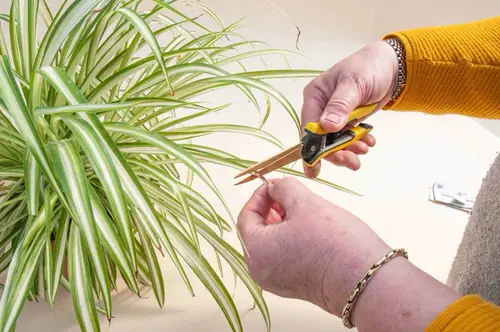
Getting rid of the dying parts like spent bloom, discolored leaves, dead and tangled stems will make more space for the plant to grow as the healthy parts can now receive all the nutrients and therefore, look much healthier, happier, and lusher.
4. Put Fish Head in the Potting Hole
A fish head is a powerhouse of calcium, phosphorous, manganese, and magnesium. They are released slowly in the growing medium, helping the plant to have lush foliage as the microorganisms break them down into the soil.
Fill one-third of the pot with the growing medium, add fishhead, cover the rest with soil and tuck your houseplant. Water as required, and the organisms in the medium will do their work to give your plant the best of the fish scrap.
Learn the other benefits of the fish head in the garden here!
5. Mix Vermicompost in the Growing Medium
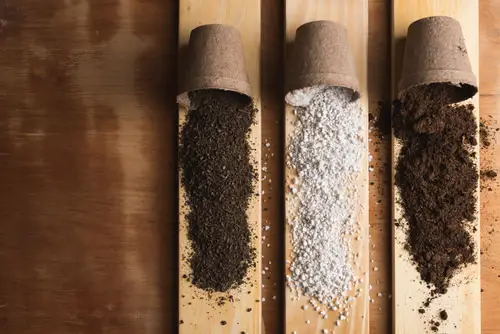
Adding vermicompost in the soil before potting the new houseplant will give it the right boost. It is an excellent soil amendment to improve drainage and it naturally enhances the development of the plant. Use them for plants like philodendron and pothos. Avoid using it in succulents.
6. Check Undersides of the Leaves
The undersides of the leaves can tell you a lot about plants. Check them for any signs of pests infestation, discoloration, and diseases. Snip away the leaves that show these signs before planting to avoid the issue from spreading to the entire plant.
7. Add Some Epsom Salt
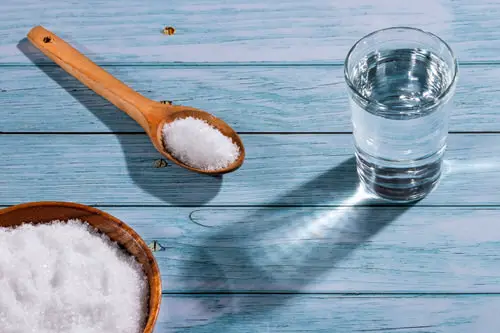
Using Epsom salt is the best way to save the plant from transplant shock, which results in wilting and leaf discoloration. It also helps in chlorophyll production, which allows the plant to heal faster and absorb nutrients better.
Epsom salt contains magnesium, a mineral that enhances the absorption of basic nutrients needed by plants to grow, such as nitrogen, phosphorus, and sulfur. Add 1/2 tablespoon of Epsom salt in 2 liters of water and pour it as needed on the growing medium after planting.
You can also mix two tablespoons of Epsom salt to 1 gallon of water and feed this solution once a month to plants.
Have a look at amazing uses of Epsom salt here
8. Put a Diaper in the Pot
Diapers are made up of a permeable barrier of cotton fiber and moisture-absorbing crystals. This incredible mix allows the disposable diaper to retain moisture for an extended period.
This quality of the diapers makes them excellent for fussy gardeners when it comes to watering houseplants.
Place the diaper in a bowl, and pour water. Once it soaks, tear and pull the gel-like substance into the bowl. Add more water to form a gel. Add equal parts of potting soil, and you’ll have super absorbent, light, and fluffy soil, perfect for your container plants!
Pro Tip: You can also use diapers to absorb excess water in case of overwatering.
Check out the Bizarre Diaper Hacks for Gardeners here
9. Put the Big Pot on a Castor Wheel Tray
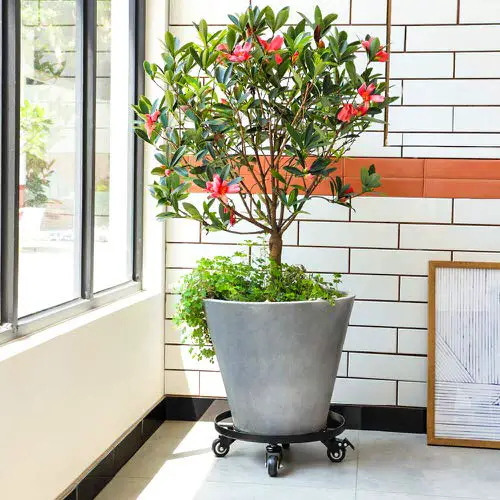
If you are planning to grow a big houseplant, then putting it over a tray with wheels would make it easy for you to move it around the room. This is also helpful if you have the plant in a room with little light.
With wheels, you can move the plant into a balcony or a spot that gets light, and after keeping it there for 3-4 hours, you can move it back easily to the room.
10. Sterilize the Pots Well
If you are using old pots to grow new plants, then you must sterilize them to ensure they don’t transmit any pests and diseases to the new plant. Traces of the trapped growing medium in these pots might be harmful to the new roots.
According to a report by the Iowa State University, soak the pots in a solution containing one part household bleach to 9 parts water for a minimum of 10 minutes. Then, put pots in a dish detergent and water solution and use steel wool or a wire-bristle brush to remove mineral deposits and other debris.
Rinse pots thoroughly and soak them in a bucket of clean water until you are ready to use them.
Bonus! Put Recently Bought Plants in Quarantine

After potting the new plant you have taken home from the nursery, it’d be a good idea to keep it in quarantine. Avoid exposing the plant to direct harsh sunlight for a week and keep it at a location where it gets filtered light to adapt to the new environment.
This process makes sure the plant does not carry any contagious disease or bugs that can quickly spread to other plants and spell disaster. Doing this also allows the plant to acclimate to the new conditions.


